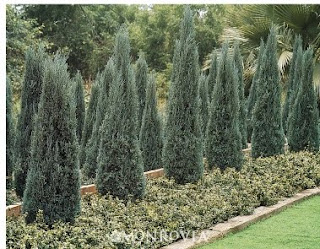Bay Friendly landscape guidelines were written for landscape professionals to provide an integrated, common-sense approach to sustainable practices. If you’re a handy DIY person who enjoys working in your garden, these guidelines will help you get started. They’re organized around 7 principles, the first of which I outlined below – landscape locally.
The second principle of Bay Friendly sustainable landscaping practices is: Landscape for Less in the Landfill. This means reducing waste or more correctly, not producing waste in the first place.
Start with the plants: select the right plant for the right place, irrigate properly without overwatering, fertilize appropriately, and you will significantly reduce your green waste.
To help guide your research, two excellent plant references are:
Plants and Landscapes for Summer-Dry Climates published by East Bay Municipal Utility District-EBMUD; and Sunset’s Western Garden Book
• Choose plants that thrive in your microclimate and soil conditions; see Sunset’s West Coast Climate Zones used in both above noted references
• Space plants so they grow to the natural size without regular pruning and trimming; these silvery Junipers will keep their narrow upright girth and create a dynamic screen or wind-break as well
• Replace hedges that need shearing with informal shrubs that don’t; this Ligustrum (privet) hedge below could look more natural and attractive if left un-sheared; rosemary shrubs (bottom) also make a lovely fragrant hedge
• Avoid invasive plants; these are listed at www.cal-ipc.org
• Grass-cycle: this means leaving lawn clippings on the ground after mowing to decompose and release nutrients
• Use plant debris for mulch: clipped, chipped, then spread over the soil
• Compost plant debris: allow your green waste to decompose and use it as soil amendment
• Prune selectively only to enhance the plant’s natural shape; you can avoid most pruning by giving plants the space they need to grow to their optimum size
• Water appropriately with drip irrigation… more on this later; over-watering can kill more plants than drought!
• Rent goats to control weeds and create firebreaks, especially on larger spaces
• Reuse, re-purpose, recycle; see previous article on this blog for list of local salvage yards
• Reduce and recycle waste; an example is to use excavated soil to create raised planting berms or mounds instead of sending it to the dump; return plant pots to the nursery, donate them to your local city college horticulture program, or in San Francisco, recycle them
• Separate plant debris for clean green – read why this is necessary in article on green waste
The San Francisco Bay Area has more than 30 microclimates. Selecting plants that are compatible with the exposure, temperature, moisture and soil in your garden and your microclimate produces healthier, more robust plants. Not only will you lower your maintenance, you also will minimize the waste that over-burdens landfill.
Next installment… Nuture the Soil!
05 August 2010
Subscribe to:
Comments (Atom)



+hedge.jpg)

